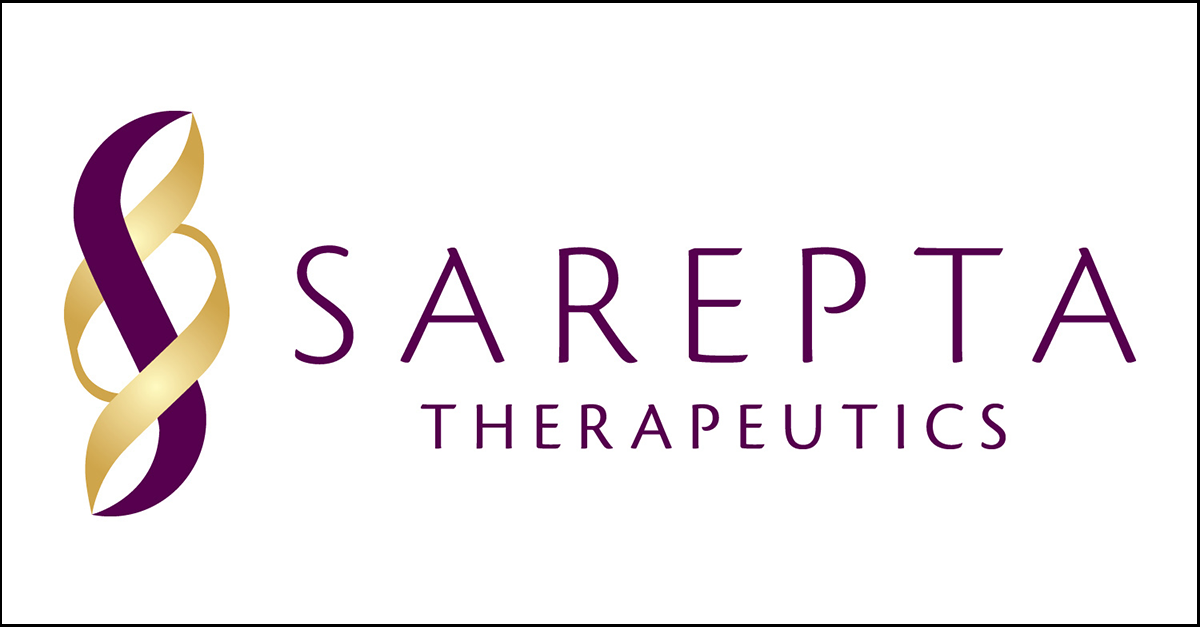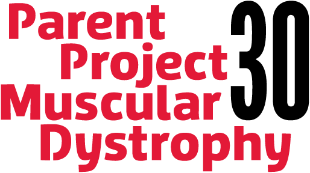
Sarepta Therapeutics today announced top-line results from Part 1 of Study SRP-9001-102 (Study 102), an ongoing, randomized, double-blind, placebo-controlled clinical trial to evaluate the safety, efficacy and tolerability of a single dose of SRP-9001 (rAAVrh74.MHCK7.micro-dystrophin) in 41 patients with Duchenne.
Below are some of the key takeaways from the announcement.
- The primary biological endpoint was reached.
- What does this mean? One of the primary endpoints for this study was to show that at 12-weeks patients who received SRP-9001 had a statistically significant increase in the amount of micro-dystrophin protein produced compared to baseline expression. The mean expression of microdystrophin protein at 12-weeks was 28.1% for those who received SRP-9001.
- The primary functional endpoint was not reached.
- What does this mean? Patients treated with SRP-9001 showed an increase in NSAA total score compared to placebo patients at 48 weeks, but the difference in the increase was not statistically significant.
- Sarepta is currently looking at the possibility that the functional characteristics of the 6-7-year-old age group may not have been well-matched between treatment and placebo, contributing to lack of statistical significance for NSAA.
- No new safety signals were identified for SRP-9001, reinforcing the favorable safety profile observed to date.
Study 102 is ongoing and data is still being collected. Participants will continue to be monitored for safety, and will undergo biopsies at week 12 in Part 2 to assess expression and biological markers, in addition to longer-term assessments of functional outcomes. Additionally, Sarepta will continue to collect data from an established and growing number of trials in this clinical development program: 9001-101, 9001-102, and 9001-103, and beyond.
Read Sarepta’s community letter:
Today, Sarepta announced topline results from Study 102 (Part 1) of SRP-9001, an investigational micro-dystrophin gene therapy designed for the treatment of people with Duchenne muscular dystrophy (NCT03769116).
These results reinforce our determination to bring potentially transformative treatments, including SRP-9001, to people living with Duchenne. This dataset is incredibly valuable and rich, and it has already added to our understanding of the safety and efficacy of this investigational therapy. We will be working to analyze the finer details of this data in the coming weeks and months.
The body of data for SRP-9001 is growing, and the combination of insights gained across studies will inform our ongoing clinical development program, including how we shape and advance future studies.
As you have requested, we are pleased to share some insights into the study and data as highlighted in today’s press release.
Study 102 is an ongoing, randomized, double blind, placebo-controlled trial. Forty-one boys with Duchenne (aged 4-7) were enrolled in this study. The data we shared today relate to the experience of 20 boys in Part 1 of the study who received investigational micro-dystrophin gene therapy compared to 21 boys treated with placebo. Here is a summary of information shared today:
- No new safety signals were observed for SRP-9001
- Study met the primary biological endpoint of micro-dystrophin protein expression at 12 weeks post-treatment, as measured by western blot, in SRP-9001-treated participants versus placebo
- SRP-9001-treated participants showed an increase in NSAA total score compared to placebo at 48 weeks; however, the study did not achieve statistical significance on the primary functional endpoint of improvement in NSAA total score compared to placebo at 48 weeks post-treatment
- It has been noted that the baseline functional characteristics are not well matched between the treatment and placebo group. In clinical trials this is undesirable and may contribute to a lack of statistical significance seen in a functional endpoint.
Some may wonder about the primary functional endpoint used to evaluate functional outcomes. NSAA is a 17-item rating scale that is used to measure functional motor abilities in people with Duchenne who are ambulant. The 17 tasks in NSAA are evaluated for 1) the amount of time it takes for an individual to complete a task, 2) whether assistance was needed to complete the task and 3) whether or not an individual is able to perform the task. It is used to monitor the progression of the disease and treatment effects which makes it suitable as an endpoint in Duchenne clinical trials.
Study 102 is ongoing and very valuable data is still being collected. The study remains blinded to all: participants, investigators, study staff, and sponsor. By now, all 41 boys have completed their 48-week assessment and have entered the Part 2 crossover phase (during which boys who previously received placebo are treated with SRP-9001). Participants will continue to be monitored for safety, and will undergo biopsies at week 12 in Part 2 to assess expression and biological markers, in addition to longer-term assessments of functional outcomes.
Importantly, we will continue to collect data from an established and growing number of trials in this clinical development program: 9001-101, 9001-102, and 9001-103, and beyond. Each piece of data increases understanding of the short and long-term impact of this investigational therapy.
We are thankful for those who participate and support participation in all clinical studies in Duchenne, and want to recognize that your contribution will inform the care and treatment of Duchenne for many years to come.
Our mission remains unchanged. Advancing the development of SRP-9001 remains a critical priority, and we will move forward with diligence and urgency to bring SRP-9001 to people with Duchenne around the world.
If you have any questions please contact your treating Physician or you may reach out to Sarepta Patient Affairs by emailing Advocacy@sarepta.com.
Read the press release from Sarepta:
Sarepta Therapeutics Announces Top-line Results for Part 1 of Study 102 Evaluating SRP-9001, its Investigational Gene Therapy for the Treatment of Duchenne Muscular Dystrophy
— Study met the primary biological endpoint of micro-dystrophin protein expression at 12 weeks post-treatment, as measured by western blot, in SRP-9001-treated participants versus placebo —
— SRP-9001-treated participants showed an increase in NSAA total score compared to placebo at 48 weeks; however, the study did not achieve statistical significance on the primary functional endpoint of improvement in NSAA total score compared to placebo at 48 weeks post-treatment —
— In the pre-specified analysis by age-group, by which the randomization was stratified, participants aged 4-5 years at time of treatment with SRP-9001 demonstrated a statistically significant improvement in NSAA total score versus the age-matched placebo cohort, achieving a 4.3-point improvement on NSAA at 48 weeks post-treatment from baseline —
— No new safety signals identified for SRP-9001, reinforcing the favorable safety profile observed to date —
— Sarepta to host conference call at 4:30 p.m. Eastern time —
CAMBRIDGE, Mass., Jan. 07, 2021 (GLOBE NEWSWIRE) — Sarepta Therapeutics, Inc. (NASDAQ:SRPT), the leader in precision genetic medicine for rare diseases, today announced top-line results from Part 1 of Study SRP-9001-102 (Study 102), an ongoing, randomized, double-blind, placebo-controlled clinical trial to evaluate the safety, efficacy and tolerability of a single dose of SRP-9001 (rAAVrh74.MHCK7.micro-dystrophin) in 41 patients with Duchenne muscular dystrophy. SRP-9001 is an investigational gene transfer therapy intended to deliver its micro-dystrophin-encoding gene to muscle tissue for the targeted production of the micro-dystrophin protein.
At 12 weeks post-treatment compared to baseline, the study met its primary biological endpoint of micro-dystrophin protein expression (P<0.0001). Participants who received SRP-9001 (n=20) had mean micro-dystrophin expression of 28.1%, as measured by western blot. Accompanying secondary biological endpoints including vector genome copies per nucleus, percent positive fibers, intensity, and reduction in creatine kinase (exploratory) were also met.
In the primary functional endpoint, SRP-9001-treated participants showed an increase in NSAA total score compared to placebo at 48 weeks; however, the difference was not statistically significant (P=0.37). At every time point measured, the cohort of SRP-9001 treated participants outperformed the placebo group, and, at 48 weeks, participants in the treatment group demonstrated a statistically significant increase of 1.7 points in NSAA total score compared to baseline (P=0.009), while participants in the placebo group saw an increase of 0.9 points on the NSAA total score compared to baseline, which was not statistically significant (n=21, P=0.1411).
Study randomization was stratified by age group and, in the pre-specified analysis of participants aged 4-5 (n=16) at the time of treatment, the treatment group demonstrated a statistically significant 4.3-point improvement on NSAA total score at 48 weeks post treatment compared to a 1.9-point improvement in the age-matched placebo group (P=0.0172). The functional status at baseline for participants in the 4-5 age group was balanced across the placebo and treatment cohorts. A statistically significant imbalance (P=0.0046) in baseline NSAA total score was present in the cohort of 6-7-year-old participants (n=25), resulting in milder participants in the placebo arm (n=13) than in the treated arm (n=12). The significantly different baseline characteristics between treatment and control groups in the 6-7 age group may have contributed to the inability to observe a treatment effect in the 6-7 age group at the week 48 timepoint in Part 1.
The results from Study 102 reinforce the favorable safety and tolerability profile of SRP-9001 with no new safety signals identified. In line with previously reported clinical data, no clinical complement activation was observed. 85% of participants in the treatment group experienced at least one treatment-related adverse event compared to 43% in the placebo group. Among participants with treatment-related adverse events, 82% were mild or moderate in severity, and 4 participants experienced serious treatment-related adverse events including 3 participants in the treatment group (2 cases of rhabdomyolysis, 2 transaminase elevations) and 1 participant in the placebo (rhabdomyolysis).
Study 102 is ongoing and remains blinded to participants, investigators, site staff and sponsor staff with direct site interaction. All 41 participants have completed their Part 1, 48-week assessment and have entered the Part 2 crossover phase. Participants continue to be monitored for safety and will undergo another biopsy at week 12 in Part 2 to assess expression and biological markers, in addition to longer-term assessments of functional outcomes.
“Study 102 reinforces our confidence in the potentially transformative benefits of SRP-9001, including among other things, the fact that in the Study’s pre-specified analysis, the participants in the 4-5 age group robustly achieved a statistically significant and clinically meaningful improvement in NSAA over placebo, as predicted by our prior Study 101. For the entire population, while we saw separation at every time point between the active and placebo cohorts, Study 102 did not achieve statistical significance on the primary functional endpoint. In this regard, we are very disappointed that the randomization process resulted in a significant imbalance in baseline NSAA scores between the active and placebo cohorts of the participants ages 6-7, making the 6-7 age groups non-comparable and likely substantially contributing to the inability to achieve statistical significance,” said Doug Ingram, president and chief executive officer, Sarepta. “Study 102 remains blinded and we will analyze the functional results for all patients, including cross-over participants, once they have achieved the 48-week timepoint in Part 2. We have already enrolled and dosed 11 participants in Study 103, using our commercial process material, and we will have biomarker and safety results from that cohort in the second quarter. And very importantly, Study 102 has provided us with a wealth of information and insight which we will use to refine and complete the protocol for our upcoming trial using commercial process material. We intend to continue to move forward with diligence and urgency to generate the evidence necessary to bring SRP-9001 to waiting Duchenne patients around the world.”
Sarepta will host an investor webcast and conference call on Thursday, Jan. 7, 2021 at 4:30 pm Eastern Time, to discuss these results. The presentation will be webcast live under the investor relations section of Sarepta’s website at https://investorrelations.sarepta.com/events-presentations and slides will be archived there following the call for one year. Please connect to Sarepta’s website several minutes prior to the start of the broadcast to ensure adequate time for any software download that may be necessary. The conference call may be accessed by dialing (844) 534-7313 for domestic callers and (574) 990-1451 for international callers. The passcode for the call is 2538387. Please specify to the operator that you would like to join the “Micro-dystrophin SRP-9001 Study 102 Top-line Results Call.”
*The NSAA is a 17-item rating scale that is used to measure functional motor abilities in ambulant children with Duchenne. It is used to monitor the progression of the disease and treatment effects which makes it suitable as an endpoint in clinical trials for Duchenne.
About SRP-9001-102
Study SRP-9001-102 (Study 102) is a double-blind, 1:1 randomized, placebo-controlled clinical trial of SRP-9001 in 41 participants with Duchenne muscular dystrophy between the ages of 4-7. Study 102 uses clinical process SRP-9001 and has two primary endpoints: micro-dystrophin expression at 12 weeks and change in NSAA total score at 48 weeks compared to placebo. Secondary endpoints include certain timed functional tests; micro-dystrophin expression measured by immunofluorescence (IF) fiber intensity; and micro-dystrophin expression measured by IF percent dystrophin positive fibers. In Part 1, results from the treatment and placebo groups are compared through 48 weeks following treatment. In Part 2, the study remains blinded while all participants in the placebo group cross over to active treatment and all participants are followed for another 48 weeks while safety and efficacy continue to be evaluated.About SRP-9001 (rAAVrh74.MHCK7.micro-dystrophin)
SRP-9001 is an investigational gene transfer therapy intended to deliver the micro-dystrophin-encoding gene to muscle tissue for the targeted production of the micro-dystrophin protein. Sarepta is responsible for global development and manufacturing for SRP-9001 and plans to commercialize SRP-9001 in the United States upon receiving FDA approval. In December 2019, the Company announced a licensing agreement granting Roche the exclusive right to launch and commercialize SRP-9001 outside the United States. Sarepta has exclusive rights to the micro-dystrophin gene therapy program initially developed at the Abigail Wexner Research Institute at Nationwide Children’s Hospital.



 by: Parent Project Muscular Dystrophy
by: Parent Project Muscular Dystrophy

